Introduction: Kia’s Electric Game-Changer
The automotive world is buzzing with anticipation as Kia prepares to launch its most strategic electric vehicle yet—the 2025 Carens Clavis EV. Slated to become Kia India’s first affordable mass-market EV, this electric MPV represents a pivotal shift in the brand’s strategy for emerging markets. Developed on the proven Carens platform that successfully blended SUV ruggedness with MPV practicality, the Clavis EV promises to deliver class-leading range, advanced technology, and family-centric innovation at an accessible price point. With production centered in India for global export, Kia is positioning this model as a transformative product that could redefine electric family mobility across developing economies .
Positioned between Kia’s luxury EV offerings (EV6 and EV9) and conventional combustion models, the Clavis EV targets the heart of India’s growing EV market. Industry analysts view it as a direct response to the massive demand for affordable, long-range electric vehicles that don’t compromise on space or features. As confirmed by Kia’s 2024 Investor Day announcements, this model is part of a trio of India-focused EVs designed to capture 25% of the emerging market EV segment by 2027 .
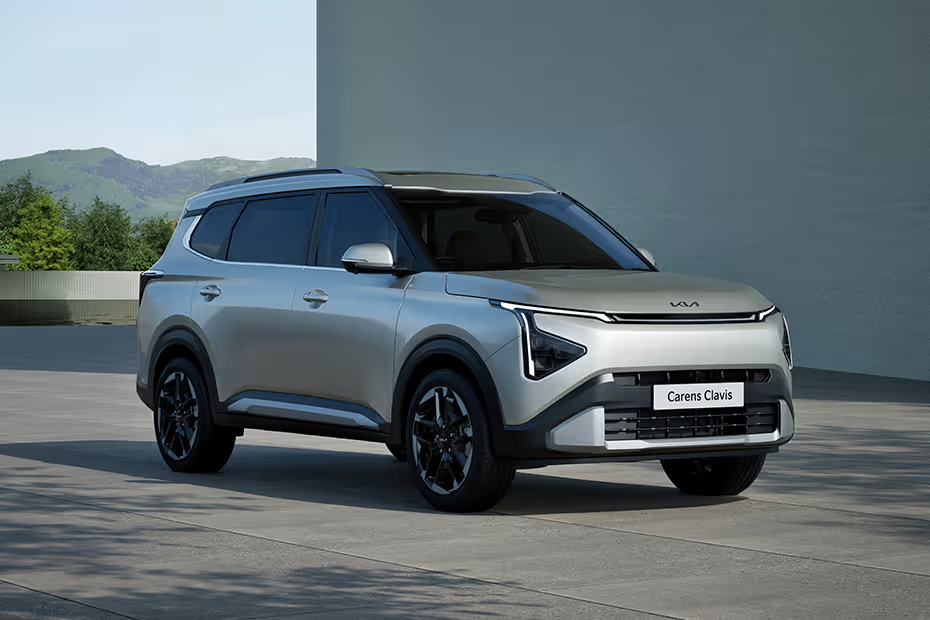
Chapter 1: Launch Timeline & Market Positioning
The Road to Production
- Global Debut Confirmed: Kia’s official communications confirm a July 2025 debut for the Carens Clavis EV, with prices expected to follow shortly after the unveiling . This timing positions it ahead of the festive season in India, maximizing early sales potential.
- Testing and Validation: Spy shots from Indian and international roads reveal near-production-ready prototypes undergoing final durability testing. Key identifiers include aerodynamic alloy wheels, front-fender charging ports, and blanked-off grilles distinguishing them from ICE siblings .
- Manufacturing Hub: The EV will be produced at Kia’s Anantapur plant in Andhra Pradesh, with significant export plans to Southeast Asian, Middle Eastern, and African markets .
Strategic Importance
The Clavis EV isn’t just another model—it’s Kia’s gateway to dominating the affordable EV segment. With the ICE-powered Carens Clavis already launched in May 2025 as a technological showcase, the EV variant leverages the same platform with critical electrification upgrades . Kia explicitly targets the ₹15-25 lakh price bracket where mainstream family car buyers operate, directly challenging the Hyundai Creta EV, Tata Curvv EV, and Mahindra XUV.e8 .
Table 1: Kia Carens Clavis EV vs. ICE Model Timeline
| Milestone | Carens Clavis EV | Carens Clavis ICE |
|---|---|---|
| Concept Unveiling | Not Shown Publicly | Auto Expo 2024 |
| Testing Completion | June 2025 | February 2025 |
| Launch Date | July 2025 (Expected) | May 23, 2025 |
| Price Announcement | Post-Debut (July 2025) | At Launch (₹11.5-21.5L) |
| Export Commitments | Global Markets | India-Focused |
Chapter 2: Price Analysis & Variant Strategy
Decoding the Pricing Puzzle
Multiple sources indicate a price range of ₹16-26 lakh (ex-showroom), reflecting significant variation across trim levels . This spread is strategic:
- Entry-Level (₹16-18 lakh): Targets mass adoption with a ~42 kWh battery and 390 km range, competing with Tata Nexon EV.
- Mid-Range (₹19-22 lakh): Adds ADAS Level 2, ventilated seats, and larger infotainment screens.
- Flagship (₹23-26 lakh): Features the 51.4 kWh battery for 473 km range, panoramic sunroof, 8-speaker Bose audio, and V2L/V2V technology .
Value Proposition
The pricing positions the Clavis EV 15-20% above ICE equivalents—a premium justified by lower operating costs and advanced tech. When compared to rivals:
- Hyundai Creta EV (est. ₹18-25 lakh): Similar specs but lacks 7-seat option
- Tata Harrier EV (est. ₹25-30 lakh): Larger but less efficient
- BYD e6 (₹29.15 lakh): More expensive despite comparable space .
See more: Everything You Need to Know About the Yezdi Adventure 2025: India’s Rugged Value Champion Evolves
Table 2: Expected Variant-wise Pricing & Key Features
| Variant | Price (₹ ex-showroom) | Battery/Range | Standout Features |
|---|---|---|---|
| HTE EV | 16-18 Lakh | 42 kWh / 390 km | 6 Airbags, 17″ Alloys, Basic Infotainment |
| HTK Plus EV | 19-22 Lakh | 42-51.4 kWh / 473 km | Dual 12.3″ Displays, Ventilated Seats |
| HTX Plus EV | 23-26 Lakh | 51.4 kWh / 473 km | ADAS Level 2, Bose Audio, V2L, Sunroof |
Chapter 3: Revolutionary Design & Styling
Exterior: EV-Specific Architecture
The Clavis EV retains the ICE model’s “Digital Tiger Face” philosophy but evolves it with aerodynamic enhancements:
- Front Fascia: A blanked-off grille with geometric texturing, angular LED DRLs forming a “Star Map” signature, and three-pod main headlamps in triangular housings. The charging port is centrally located for convenience .
- Profile: Retains the boxy silhouette optimizing interior volume but adds flush-fitting door handles, aero-optimized 17-inch alloy wheels, and reduced drag-enhancing creases .
- Rear: Features connected LED tail lamps with crystalline detailing and a reprofiled bumper omitting exhaust cutouts.
Watch full review video:
Color & Customization
Expect eight monotone options including Glacier White Pearl, Gravity Gray Aurora, and Imperial Blue—all using eco-friendly water-based paints. Spy shots suggest potential for dual-tone schemes in higher trims .
Chapter 4: Interior & Technology Deep Dive
Space Optimization
The Clavis EV offers class-leading flexibility with:
- Seating Configurations: 6-seat (captain chairs) or 7-seat (bench) layouts
- Smart Tumble Mechanism: Second-row seats electrically slide and tumble for third-row access
- Cargo Engineering: 540 liters (behind third row) expandable to 1,800 liters .
Digital Experience
Kia integrates its latest connectivity ecosystem:
- Display Suite: Dual 12.3-inch panoramic screens (instrument cluster + infotainment) with Kia Connect 2.0 supporting over 80 features including remote thermal management and multilingual voice commands .
- Comfort Tech: Ventilated front seats with “Boss Mode” co-passenger adjustment, 4-zone climate control with roof-mounted vents, and a Smart Pure Air Purifier with AQI monitoring .
- Audio Innovation: 8-speaker Bose premium system with sound profiling optimized for EV cabin acoustics .
EV-Specific Innovations
Beyond conventional amenities, the Clavis EV debuts:
- V2L (Vehicle-to-Load): Powers appliances (up to 3.6 kW) via exterior sockets—ideal for camping or emergencies
- V2V (Vehicle-to-Vehicle): Emergency charging for other EVs
- Digital Key 2.0: Smartphone-based access and profile synchronization .
Table 3: Battery Specifications & Performance Estimates
| Parameter | Standard Range | Long Range |
|---|---|---|
| Battery Capacity | 42 kWh (LFP Chemistry) | 51.4 kWh (NMC Chemistry) |
| Range (ARAI Claimed) | 390 km | 473 km |
| DC Charging (10-80%) | 35 minutes | 45 minutes |
| AC Charging (0-100%) | 6.5 hours | 8 hours |
| Peak Power Output | 134 bhp | 154 bhp |
Chapter 5: Powertrain, Range & Charging
Battery Architecture
Sourced from Hyundai-Kia’s global EV supply chain, the Clavis EV offers two battery options:
- Standard (42 kWh): Uses cost-effective LFP (Lithium Iron Phosphate) chemistry ideal for urban use
- Long Range (51.4 kWh): Features energy-dense NMC (Nickel Manganese Cobalt) chemistry for highway driving .
Real-World Efficiency
While ARAI figures suggest up to 473 km, real-world conditions (AC use, highway speeds) may reduce range by 12-15%. However, regenerative braking with four adjustable levels (including one-pedal driving mode) helps maximize efficiency .
Charging Flexibility
- DC Fast Charging: 10-80% in under 45 minutes (150 kW capable)
- Home Charging: 7.4 kW AC wallbox included with premium variants
- Portable Charger: 3.3 kW cable provided for standard outlets .
Chapter 6: Safety & Driver Assistance
Structural Integrity
Built on a reinforced version of the ICE Carens’ platform, the EV model features:
- High-Strength Steel Frame: Reinforced battery protection with side-impact beams
- Battery Safety: Multi-layer protection against intrusion, liquid cooling, and crash-disconnect systems .
ADAS Level 2 Suite
The flagship HTX Plus variant includes 20 autonomous functions:
- Collision Avoidance: Forward/Rear Cross-Traffic Collision-Avoidance Assist
- Driving Convenience: Smart Cruise Control with Stop & Go functionality
- Lane Safety: Lane Keep Assist + Lane Following Assist
- Parking Aid: Remote Smart Parking Assist + 360º Camera .
Standard Safety Equipment
Even base models include 6 airbags, ESC, hill-start assist, and all-disc brakes—a segment-first commitment .
Chapter 7: Competitive Landscape & Positioning
Direct Rivals Analysis
The Clavis EV enters a crowded segment but differentiates through its MPV-SUV fusion:
- Hyundai Creta EV: Similar specs but lacks third-row seating
- Tata Curvv EV: Sportier design but inferior cabin tech
- Mahindra BE 05: Performance-focused but pricier .
The ICE Comparison
While electric, the Clavis EV competes with premium ICE people-movers like the Toyota Innova Hycross (₹19.77-30.68 lakh) by offering lower TCO (total cost of ownership) and futuristic tech .
Table 4: Competitive Positioning in India’s EV Market
| Model | Price Range (₹ lakh) | Seating | Max Range (km) | Key Advantage |
|---|---|---|---|---|
| Kia Carens Clavis EV | 16-26 | 6/7 | 473 | Space, ADAS, V2L |
| Hyundai Creta EV | 18-25 (Est.) | 5 | 450 (Est.) | Brand Trust |
| Tata Curvv EV | 18-22 (Est.) | 5 | 500 (Claimed) | Range |
| MG ZS EV | 22.88-27.90 | 5 | 461 | Existing Market Presence |
Chapter 8: Ownership Economics
Cost of Ownership Breakdown
- Financing: Kia expected to offer sub-7% interest rates for EV-specific loans
- Insurance: Annual premiums approx. ₹35,000 (comprehensive cover)
- Maintenance: 40% lower than ICE models (no oil changes, fewer moving parts)
- Service Packages: 3-year/45,000 km bundled maintenance at ~₹25,000 .
Resale Value & Warranty
Projections indicate 55-60% residual value after 3 years, backed by:
- Battery Warranty: 8 years/160,000 km
- Vehicle Warranty: 5 years/unlimited km .
Conclusion: The Electric Family Revolution Starts Here
The 2025 Kia Carens Clavis EV isn’t just another electric car—it’s a strategic masterstroke in affordable EV innovation. By combining the practicality Indian families demand with the technology and efficiency of tomorrow, Kia addresses the core barriers to EV adoption: range anxiety, space compromise, and premium pricing. With deliveries starting August 2025, the Clavis EV could become the default choice for progressive families seeking to electrify their mobility without sacrificing comfort or capability. As Kia transforms India into its global EV export hub, the Clavis EV represents both a product and a vision—one where electric mobility is accessible, practical, and undeniably desirable .
Kia Carens Clavis highlights :
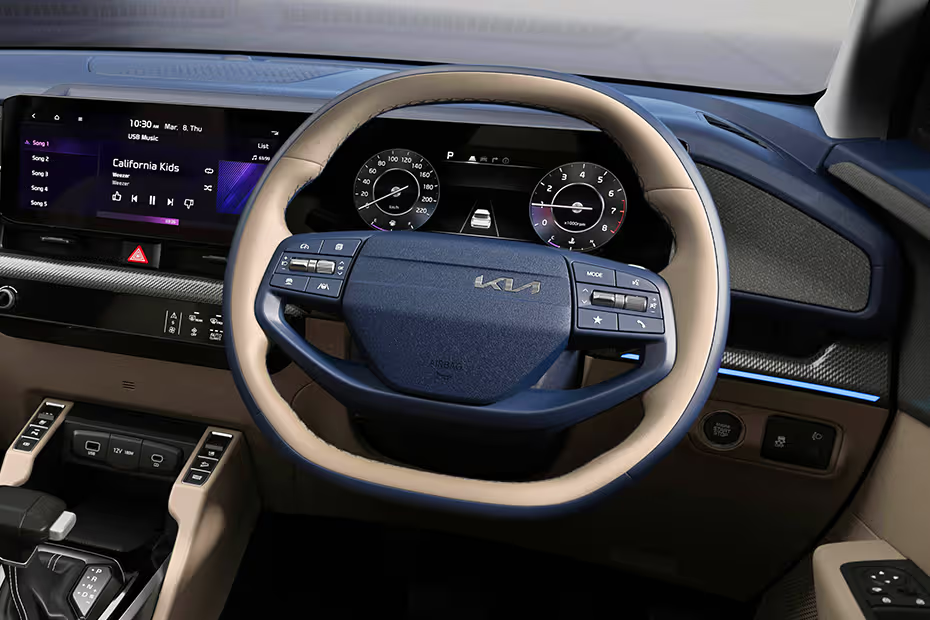
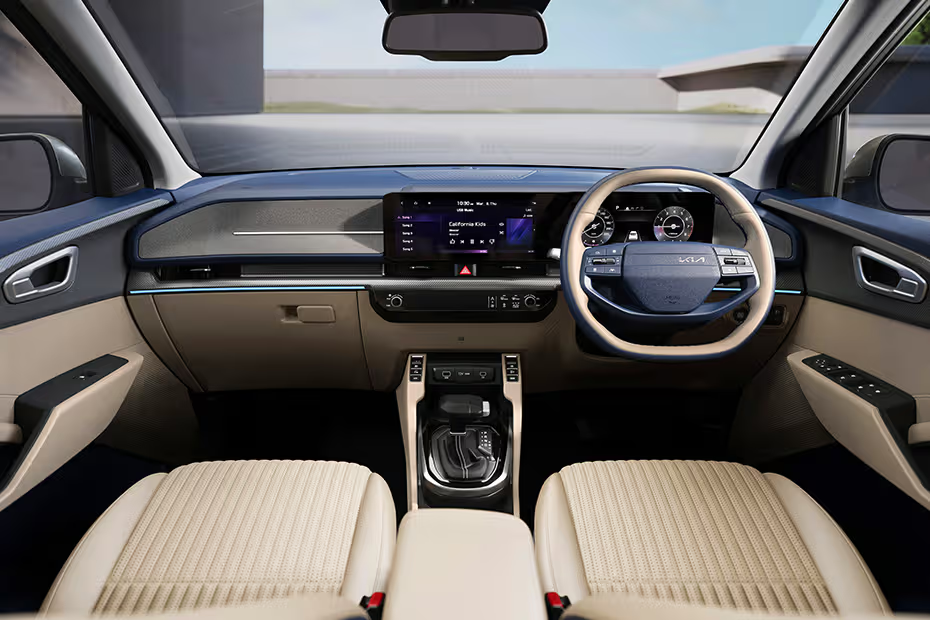
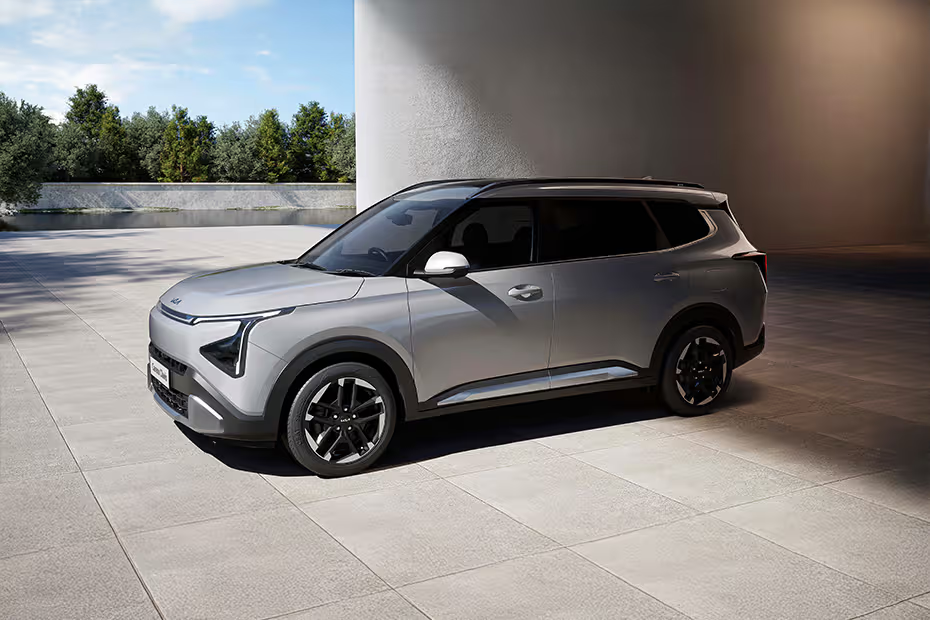
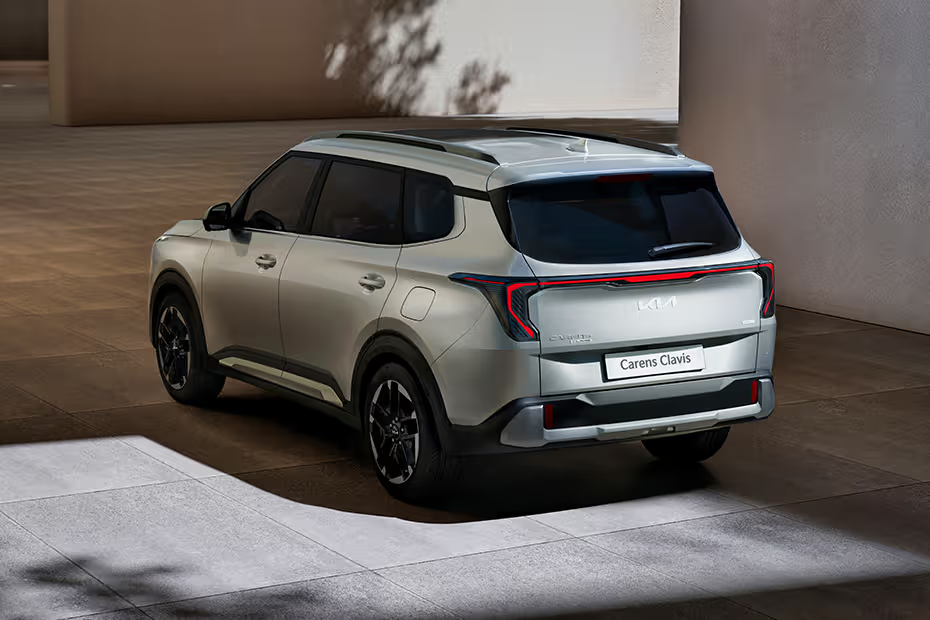



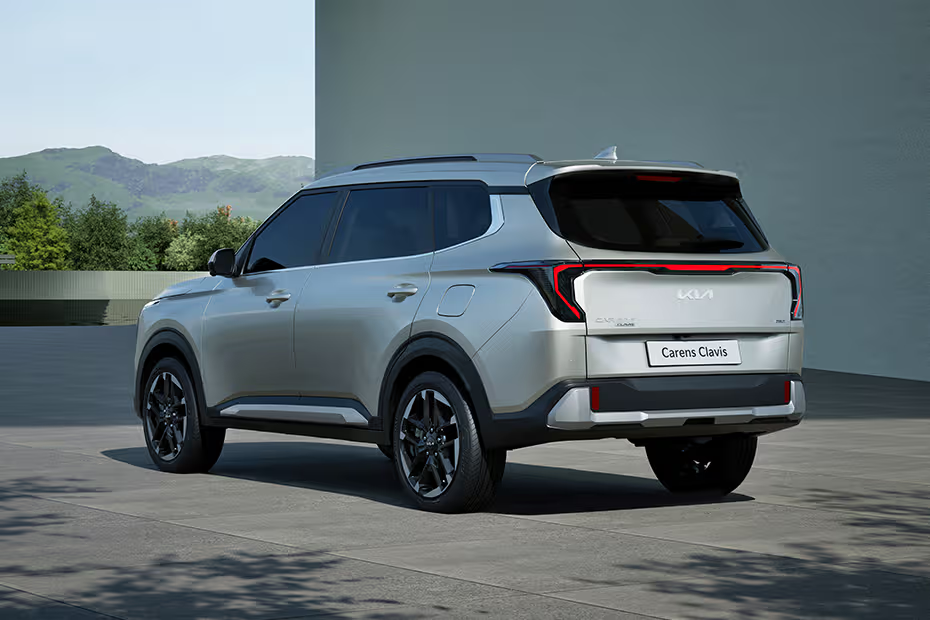

See more: Kia Carens Clavis Review: From Grocery Runs to Goa Plans—It Does It All (in Style)
